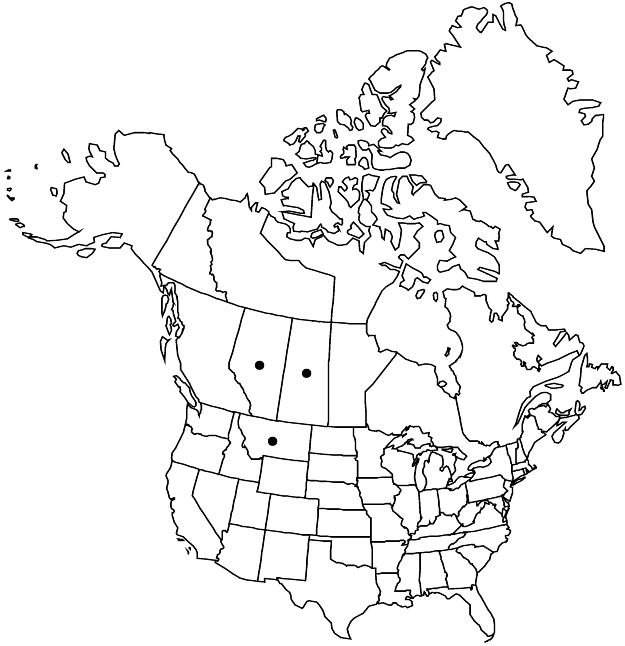Crataegus ursopedensis
J. Bot. Res. Inst. Texas 1: 1081, plates 6.1d, 7.4d, fig. 27. 2007.
Shrubs, 20–30(–40) dm. Stems: expanding bud-scales orange-tan or paler; twigs: new growth pubescent, 1-year old shiny red-brown, 2-years old red-brown with white flakes, older gray; thorns on twigs usually numerous, ± straight to recurved, 2-years old shiny, very dark red-brown, ± stout, (3–)4–7 cm. Leaves: petiole length 30–45% blade, glabrous (adaxial sulcus hairy mature), densely sessile-glandular; blade ovate to ovate-trullate, 5.5–9.5 cm (flabellate, 2–3 cm at early anthesis), subcoriaceous, base cuneate to narrowly cuneate, lobes 4 or 5 per side, sinuses deep (max LII 25–35%), lobe apex acute to acuminate, margins ± serrate, teeth numerous, small, veins 5 per side, apex acuminate, glossy, abaxial surface glabrous, main veins sometimes sparsely to moderately pubescent young, adaxial densely scabrous young, glabrate mature. Inflorescences (1–)5–12-flowered, widely spread at full anthesis; branches moderately pubescent; bracteoles cream to pale green, often suffused light red especially distally, narrowly elliptic, membranous, margins densely sessile-glandular, appearing to grade into bud scales. Flowers 15–18 mm diam.; hypanthium exterior pubescent, interior glabrous; sepals pale green to scarious, triangular, 4–5 mm, margins glandular or glandular-denticulate, abaxially glabrous, adaxially sparsely hairy; stamens 10, anthers ivory; styles 3 or 4. Pomes 1–8 mm; branches pubescent, sometimes sparsely; orange-red young, becoming orange-red to bright red, ellipsoid or oblong, 8–11 mm tall, pubescent; sepals spreading to ± appressed, 3–4 mm; pyrenes 3 or 4, sides plane to shallowly concave.
Phenology: Flowering May–Jun; fruiting not recorded.
Habitat: Thickets, shade of aspen or poplar
Elevation: 800–1300 m
Distribution

Alta., Sask., Mont.
Discussion
Crataegus ursopedensis is restricted to and locally common in the Bear's Paw Mountains (Montana) and the Cypress Hills (Alberta and Saskatchewan).
Crataegus ursopedensis can have strikingly large, deeply incised and sharply lobed, short-shoot leaves; they are often smaller and may then be difficult to differentiate from those of C. rubribracteolata. Compared to the latter, the thorns are often longer, the inflorescences more open, the petioles proportionately longer, the bracteoles paler and, significantly, the pyrene sides more nearly plane. Crataegus ursopedensis is strikingly distinct within ser. Rotundifoliae and perhaps does not belong there.
Selected References
None.